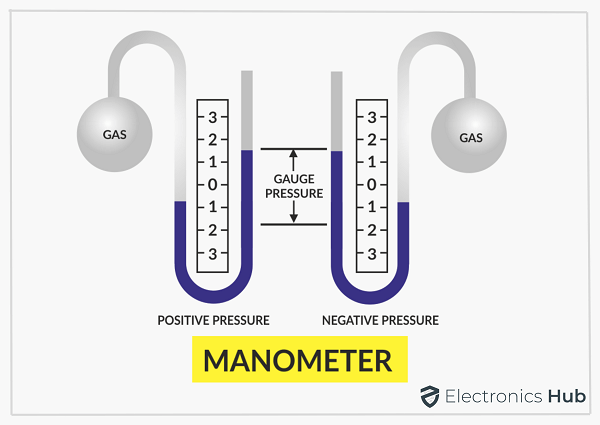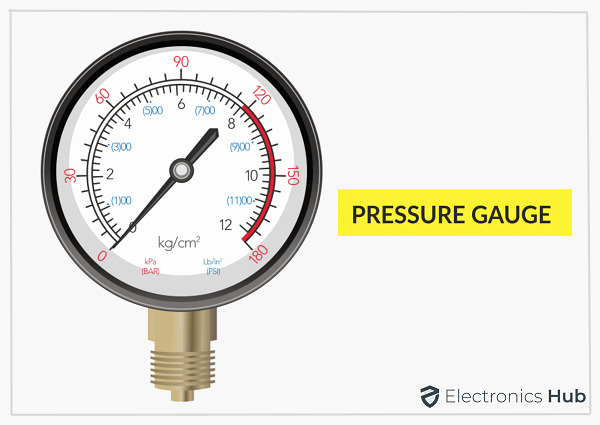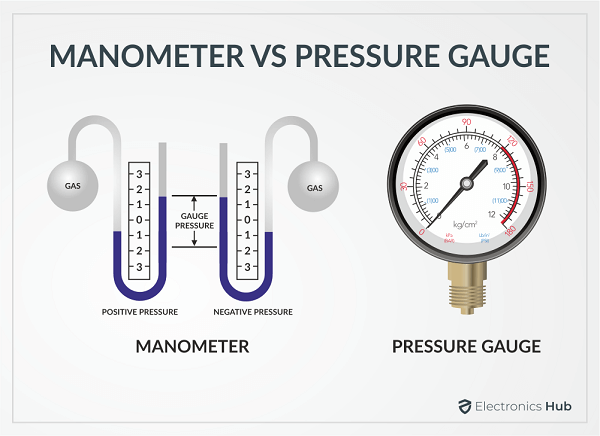Outline
ToggleWhat is a Manometer?
With a manometer, you will be able to measure the fluid pressure. The instrument balances and creates a hydraulic pressure for measuring the pressure with a predetermined column of fluid. It lets you measure negative and high pressure.
A manometer is a type of pressure gauge and has a transparent tube. It features a partially filled U tube with one end connected to the location whereas the other to the open atmosphere. There are many types of manometers like inclined manometers, U-tube manometers, well tube manometers, and small manometers.
Working Principle of a Manometer

If in any case, the pressure of the additionally connected tube goes higher, it will create downward pressure. This results in pushing the liquid down for a significant pressure. Similarly, when an additionally connected tube has less atmospheric pressure, the liquid will go down to the U-tube and start rising on the other side.
Click Here To know Barometer Vs Manometer
What Are The Different Applications Of Manometers?
There are many advantages of using a manometer. One of the best things about a manometer is that it comes with good sensitivity and accuracy. Even when there is vibration, you don’t have to worry about any issue. A manometer is also affordable and it has less maintenance. You can use a manometer for both low differential pressure and low pressure. Not just that, it lets you change the sensitivity according to your requirements.
Manometers are suitable for different applications including
- Measuring the static pressure as well as vacuum.
- Pressure monitoring applications.
- Monitoring the gas and air pressure of the compressor.
- HVAC system maintenance.
- Fluid flow measurements.
- Physiological measurements including blood pressure.
- Weather conditions and meteorological monitoring.
What is a Pressure Gauge?
A pressure gauge lets you measure the intensity of steam, water, fluid, and gas. With it, you can make sure there are no pressure changes or leaks that can affect the performance of pressure-powered machines. It lets you use it with a specific pressure range.
Pressure gauges are suitable for different applications. It can also be ideal for troubleshooting processes. There are many types of pressure gauges like the absolute pressure gauge, differential pressure gauge, and other gauge pressure measuring instruments.
Working Principle of Pressure Gauges

After the tube is reformed, the tube will straighten or uncoil when the pressure is applied. This will result in the elongation of the tube by 2 to 3 mm. This elasticity is the changing pressure measurement. A pressure gauge has a series of springs that are compressed and it helps to provide the pressure readings.
What Are The Different Applications Of Pressure Gauges?
Pressure gauges have wide applications and allow measuring the pressure in a system for better consistency. It makes sure there will be maximum safety and prevents steam leaks or pressure buildup. As there are many types of pressure gauges, they can be perfect for automobiles and aeronautics.
Even in aeronautics, the different types of pressure gauges used are the diaphragm, Bourton tube, and bellows. Pressure gauges are also suitable for oil production, chemical industry, and food industry. Hydraulic pressure gauges let you detect pressure changes in a hydraulic component.
Main Difference Between Manometer Vs Pressure Gauge

Conclusion
Although both the devices are for measuring pressure, the working principles of the manometer and pressure gauge are different. Manometers are easy to use and they are also very affordable. An electronic manometer is great for professional purposes due to its compact and portable size. Even in the resolution and accuracy, it performs way better which makes it great for technicians.

